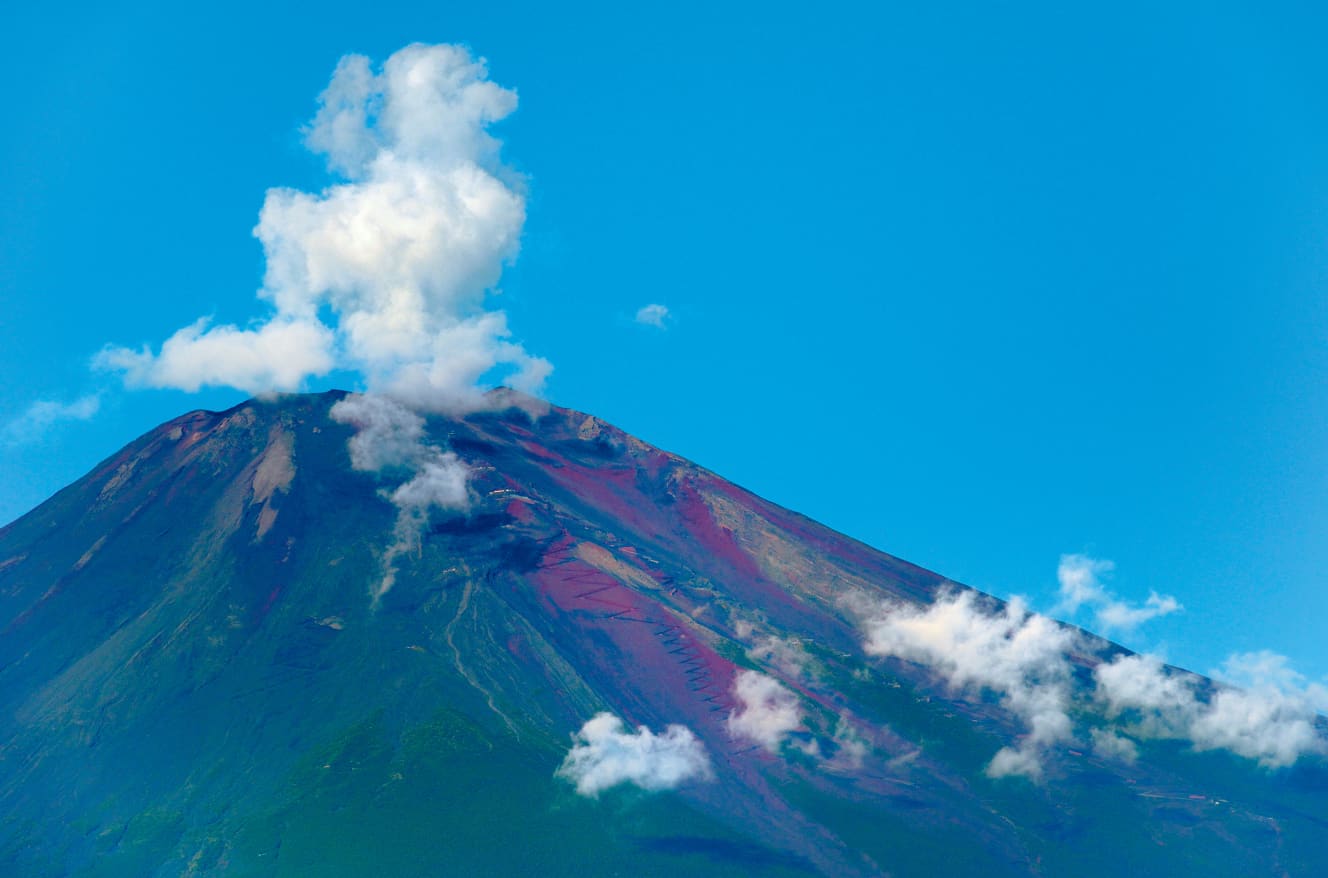10 years since its registration as a World Heritage site…New Year’s Special Program! 7 Photos of Mt. Fuji, a Symbol of Nippon
Fuji’s High Peaks and Blue Kites in the New Year
Tagonoura Port Park (Fuji City, Shizuoka Prefecture)

Fuji, a symbol of Japan, will celebrate the 10th anniversary of its registration as a World Heritage site in 2023.
World Heritage sites are required to have a unique value that can only be found there. Mount Sinai in Egypt and Uluru in Australia are examples of mountains that are regarded as sacred and worshipped as such, but in the case of Mt. Fuji, the act of climbing the mountain itself had religious significance, and it has remained an object of continuous faith in different forms, including Sengen worship, Shugendo, Fuji-ko, and today’s act of worshipping the sunrise. Fuji’s value was further enhanced by the fact that works such as “Thirty-six Views of Mount Fuji” by Hokusai Katsushika, an ukiyoe woodblock print artist of the late Edo period, crossed the ocean and influenced world-famous artists such as Van Gogh, Monet, and Debussy.
In Japan, too, as represented by the waka poems of Yamabe Akahito, a poet of the Manyoshu anthology, numerous artists have expressed their love and admiration of mountain scenery in letters and paintings. This remains true even in Reiwa. Just seeing the mountain’s shape on the Shinkansen bullet train, for example, naturally lifts one’s heart and makes one feel happy. The COVID-19 crisis continues, prices are rising, and the list of worries is endless, but it is times like these when I want to be soothed by the spectacular view of Mt.
A reddish-brown summit with summer clouds
Yamanakako Panorama-dai (Yamanakako Village, Yamanashi Prefecture)
Each time you press the shutter release button, the clouds move constantly, changing the face of the mountain. For a magnificent summer view, “Lake Yamanakako Panorama-dai” on the Yamanashi Prefecture side is good. Visitors arrive with cameras in hand before dawn to see Akafuji, the reddening of the mountain’s surface in the morning sun.

Dusk with pine trees on the beach and Mt.
Tateishi Beach (Yokosuka City, Kanagawa Prefecture)
Beautiful evening view over Sagami Bay from Miura Peninsula. The distant view of the pine trees standing on the rocks and Mt. Fuji was painted by Hiroshige Utagawa, a painter known for his “Fifty-three Stages of the Tokaido,” and the scenery is almost the same as it was in the late Edo period.

Fuji by the lake in the haze
Near Mama no Mori Observatory (Yamanakako Village, Yamanashi Prefecture)
From the northern shore of Lake Yamanaka, a lyrical Mt. Fuji appears in a spring haze at the foot of the mountain. Mama” means cliff. The top of the cliff, about 30 meters above the water, is also a good spot for photographing “upside-down Fuji” reflected on the lake surface.

Sacred mountain peaks in autumn viewed from a scenic spot
Miho Matsubara (Shizuoka City, Shizuoka Prefecture)
Located about 45 km southwest of the summit of Mt. Fuji, this scenic spot offers a view of Mt. A pine forest (silhouetted area on the left in the photo) stretches about 5 km along the coast facing Suruga Bay, attracting many tourists throughout the year. It is also known as the stage of the legend of the robe of feathers.

Kayaba noyaki (wild fire at Kayaba, Shizuoka Prefecture)
Asagiri Plateau (Fujinomiya City, Shizuoka Prefecture)
At the western foot of Mt. Fuji, there are grasslands of silver grass, which is used to make thatched roofs. In the Nebara district, field burning is held every April to obtain high-quality thatch. When the fire is set, rabbits and pheasants sometimes jump out.

Night view of factories and Mt.
Tagonoura Port (Fuji City, Shizuoka Prefecture)
Tagonoura, once notorious for sludge pollution, has improved its environment and is now famous for its night views of factories, which can be seen from 0 m above sea level to 3,776 m above sea level. From the vicinity of the fishing port, the smoke from the chimneys and the snow of Mt.

From the January 20 and 27, 2023 issues of FRIDAY
Photographed by: Kazuyoshi Furuichi